
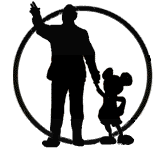


"To think six years ahead - even two or three - in this business of making animated cartoon features, it takes calculated risk and much more than blind faith in the future of theatrical motion pictures. I see motion pictures as a family-founded institution closely related to the life and labor of millions of people. Entertainment such as our business provides has become a necessity, not a luxury. Curiouly, it is the part which offers us the greatest reassurance about the future in the animation field."
Try to imagine a world without Walt Disney. A world without his magic, whimsy, and optimism. Walt Disney transformed the entertainment industry, into what we know today. He pioneered the fields of animation, and found new ways to teach, and educate.
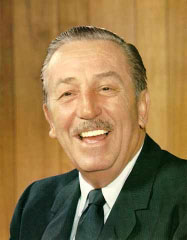 Walt's
optimism came from his unique ability to see the entire picture. His views
and visions, came from the fond memory of yesteryear, and persistence for
the future. Walt loved history. As a result of this, he didn't give technology
to us piece by piece, he connected it to his ongoing mission of making
life more enjoyable, and fun. Walt was our bridge from the past to the
future.
Walt's
optimism came from his unique ability to see the entire picture. His views
and visions, came from the fond memory of yesteryear, and persistence for
the future. Walt loved history. As a result of this, he didn't give technology
to us piece by piece, he connected it to his ongoing mission of making
life more enjoyable, and fun. Walt was our bridge from the past to the
future.
During his 43-year Hollywood career, which spanned the development of the motion picture industry as a modern American art, Walter Elias Disney established himself and his innovations as a genuine part of Americana.
A pioneer and innovator, and the possessor of one of the most fertile
and unique imaginations the world has ever known. Walt Disney could take
the dreams of America, and make them come true. He was a creator, a imaginative,
and aesthetic person. Even thirty years after his death, we still continue
to grasp his ideas, and his creations, remembering him for everything he's
done for us . . . . .
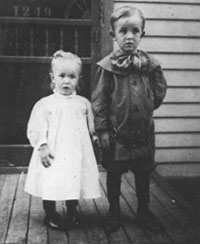 Walter
Elias Disney was born on December 5, 1901 in Chicago Illinois, to his father,
Elias Disney, an Irish-Canadian, and his mother, Flora Call Disney, who
was of German-American descent. Walt was one of five children, four boys
and a girl.
Walter
Elias Disney was born on December 5, 1901 in Chicago Illinois, to his father,
Elias Disney, an Irish-Canadian, and his mother, Flora Call Disney, who
was of German-American descent. Walt was one of five children, four boys
and a girl.
Later, after Walt's birth, the Disney family moved to Marceline, Missouri. Walt lived out most of his childhood here. Walt had a very early interest in drawing, and art. When he was seven years old, he sold small sketches, and drawings to nearby neighbors. Instead of doing his school work Walt doodled pictures of animals, and nature. His knack for creating enduring art forms took shape when he talked his sister, Ruth, into helping him paint the side of the family's house with tar.
Close to the Disney family farm, there were Santa Fe Railroad tracks that crossed the countryside. Often Walt would put his ear against the tracks, to listen for approaching trains. Walt's uncle, Mike Martin, was a train engineer who worked the route between Fort Madison, Iowa, and Marceline. Walt later worked a summer job with the railroad, selling newspapers, popcorn, and sodas to travelers.
During his life Walt would often try to recapture the freedom he felt when aboard those trains, by building his own miniature train set. Then building a 1/8-scale backyard railroad, the Carolwood Pacific or Lilly Bell.
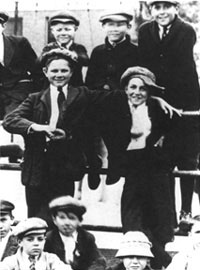 Besides
his other interests, Walt attended McKinley High School in Chicago. There,
Disney divided his attention between drawing and photography, and contributing
to the school paper. At night he attended the Academy of Fine Arts, to
better his drawing abilities.
Besides
his other interests, Walt attended McKinley High School in Chicago. There,
Disney divided his attention between drawing and photography, and contributing
to the school paper. At night he attended the Academy of Fine Arts, to
better his drawing abilities.
Walt discovered his first movie house on Marceline's Main Street. There he saw a dramatic black-and-white recreation of the crucifixion and resurrection of Christ.
During these "carefree years" of country living young Walt began to love, and appreciate nature and wildlife, and family and community, which were a large part of agrarian living. Though his father could be quite stern, and often there was little money, Walt was encouraged by his mother, and older brother, Roy.
Even after the Disney family moved to Kansas City, Walt continued to develop and flourish in his talent for artistic drawing. Besides drawing, Walt had picked up a knack for acting and performing. At school he began to entertain his friends by imitating his silent screen hero, Charlie Chaplin. At his teachers invitation, Walt would tell his classmates stories, while illustrating on the chalk board. Later on, against his fathers permission, Walt would sneak out of the house at night to perform comical skits at local theaters.
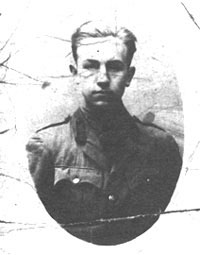 During
the fall of 1918, Disney attempted to enlist for military service. Rejected
because he was under age, only sixteen years old at the time. Instead,
Walt joined the Red Cross and was sent overseas to France, where he spent
a year driving an ambulance and chauffeuring Red Cross officials. His ambulance
was covered from stem to stern, not with stock camouflage, but with Disney
cartoons.
During
the fall of 1918, Disney attempted to enlist for military service. Rejected
because he was under age, only sixteen years old at the time. Instead,
Walt joined the Red Cross and was sent overseas to France, where he spent
a year driving an ambulance and chauffeuring Red Cross officials. His ambulance
was covered from stem to stern, not with stock camouflage, but with Disney
cartoons.
Once he returned from France, he wanted to pursue a career in commercial art, which soon lead to his experiments in animation. He began producing short animated films for local businesses, in Kansas City. By the time Walt had started to create The Alice Comedies, which was about a real girl and her adventures in an animated world, Walt ran out of money, and his company Laugh-O-Grams went bankrupted. Instead of giving up, Walt packed his suitcase and with his unfinished print of The Alice Comedies in hand, headed for Hollywood to start a new business. He was not yet twenty-two.
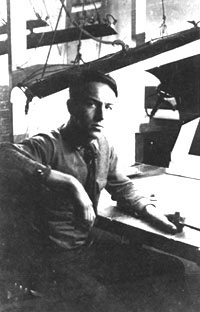 The
early flop of The Alice Comedies inoculated Walt against fear of failure;
he had risked it all three or four times in his life. Walt's brother, Roy
O. Disney, was already in California, with an immense amount of sympathy
and encouragement, and $250. Pooling their resources, they borrowed an
additional $500, and set up shop in their uncle's garage. Soon, they received
an order from New York for the first Alice in Cartoonland (The Alice
Comedies) featurette, and the brothers expanded their production operation
to the rear of a Hollywood real estate office. It was Walt's enthusiasm
and faith in himself, and others, that took him straight to the top of
Hollywood society.
The
early flop of The Alice Comedies inoculated Walt against fear of failure;
he had risked it all three or four times in his life. Walt's brother, Roy
O. Disney, was already in California, with an immense amount of sympathy
and encouragement, and $250. Pooling their resources, they borrowed an
additional $500, and set up shop in their uncle's garage. Soon, they received
an order from New York for the first Alice in Cartoonland (The Alice
Comedies) featurette, and the brothers expanded their production operation
to the rear of a Hollywood real estate office. It was Walt's enthusiasm
and faith in himself, and others, that took him straight to the top of
Hollywood society.
Although, Walt wasn't the typical Hollywood mogul. Instead of socializing with the "who's who" of the Hollywood entertainment industry, he would stay home and have dinner with his wife, Lillian, and his daughters, Diane and Sharon. In fact, socializing was a bit boring to Walt Disney. Usually he would dominate a conversation, and hold listeners spellbound as he described his latest dreams or ventures. The people that where close to Walt were those who lived with him, and his ideas, or both.
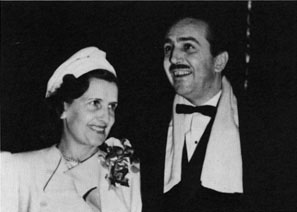 On
July 13, 1925, Walt married one of his first employees, Lillian Bounds,
in Lewiston, Idaho. Later on they would be blessed with two daughters,
Diane and Sharon . Three years after Walt and Lilly wed, Walt created a
new animated character, Mickey Mouse.
On
July 13, 1925, Walt married one of his first employees, Lillian Bounds,
in Lewiston, Idaho. Later on they would be blessed with two daughters,
Diane and Sharon . Three years after Walt and Lilly wed, Walt created a
new animated character, Mickey Mouse.
His talents were first used in a silent cartoon entitled Plane Crazy. However, before the cartoon could be released, sound was introduced upon the motion picture industry. Thus, Mickey Mouse made his screen debut in Steamboat Willie, the world's first synchronized sound cartoon, which premiered at the Colony Theater in New York on November 18, 1928.
Walt's drive to perfect the art of animation was endless. Technicolor was introduced to animation during the production of his Silly Symphonies Cartoon Features. Walt Disney held the patent for Technicolor for two years, allowing him to make the only color cartoons. In 1932, the production entitled Flowers and Trees won Walt the first of his studio's Academy Awards. In 1937, he released The Old Mill, the first short subject to utilize the multi-plane camera technique.
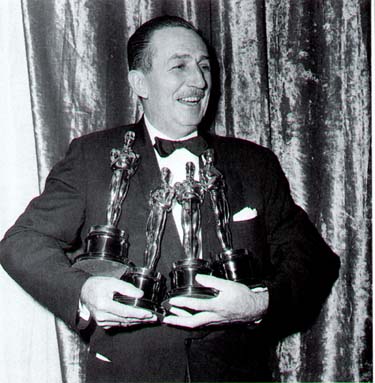 On
December 21, 1937, Snow White
and the Seven Dwarfs, the first full-length animated musical feature,
premiered at the Carthay Theater in Los Angeles. The film produced at the
unheard cost of $1,499,000 during the depths of the Depression, the film
is still considered one of the great feats and imperishable monuments of
the motion picture industry. During the next five years, Walt Disney Studios
completed other full-length animated classics such as Pinocchio,
Fantasia,
Dumbo,
and Bambi.
On
December 21, 1937, Snow White
and the Seven Dwarfs, the first full-length animated musical feature,
premiered at the Carthay Theater in Los Angeles. The film produced at the
unheard cost of $1,499,000 during the depths of the Depression, the film
is still considered one of the great feats and imperishable monuments of
the motion picture industry. During the next five years, Walt Disney Studios
completed other full-length animated classics such as Pinocchio,
Fantasia,
Dumbo,
and Bambi.
Walt rarely showed emotion, though he did have a temper that would blow
over as it blew up. At home, he was affectionate and understanding. He
gave love by being interested, involved, and always there for his family
and friends. Walt's daughter, Diane Disney Miller, once said:
Daddy never missed a father's function no matter how I discounted it. I'd say,"Oh, Daddy, you don't need to come. It's just some stupid thing." But he'd always be there, on time.Probably the most painful time of Walt's private life, was the accidental death of his mother in 1938. After the great success of Snow White and the Seven Dwarfs, Walt and Roy bought their parents, Elias and Flora Disney, a home close to the studios.
Less than a month later Flora died of asphyxiation caused by a faulty furnace in the new home. The terrible guilt of this haunted Walt for the rest of his life.
In 1940, construction was completed on the Burbank Studio, and Disney's
staff swelled to more than 1,000 artists, animators, story men, and technicians.
Although, because of World War II 94 percent of the Disney facilities were
engaged in special government work, including the production of training
and propaganda films for the armed services, as well as health films which
are still shown through-out the world by the U.S. State Department. The
remainder of his efforts were devoted to the production of comedy short
subjects, deemed highly essential to civilian and military morale.
Disney's 1945 feature, the musical The Three Caballeros, combined live action with the cartoon animation, a process he used successfully in such other features as Song of the South and the highly acclaimed Mary Poppins. In all, more than 100 features were produced by his studio.
Walt's inquisitive mind and keen sense for education through entertainment resulted in the award-winning True-Life Adventure series. Through such films as The Living Desert, The Vanishing Prairie, The African Lion, and White Wilderness, Disney brought fascinating insights into the world of wild animals and taught the importance of conserving our nation's outdoor heritage.
 Walt
Disney's dream of a clean, and organized amusement park, came true, as
Disneyland Park opened in 1955. As a fabulous $17-million magic kingdom,
soon had increased its investment tenfold, and by the beginning of its
second quarter-century, had entertained more than 200 million people, including
presidents, kings and queens, and royalty from all over the globe.
Walt
Disney's dream of a clean, and organized amusement park, came true, as
Disneyland Park opened in 1955. As a fabulous $17-million magic kingdom,
soon had increased its investment tenfold, and by the beginning of its
second quarter-century, had entertained more than 200 million people, including
presidents, kings and queens, and royalty from all over the globe.
A pioneer in the field of television programming, Disney began television production in 1954, and was among the first to present full-color programming with his Wonderful World of Color in 1961. The Mickey Mouse Club was a popular favorite in the 1950s.
But that was only the beginning. In 1965, Walt Disney turned his attention
toward the problem of improving the quality of urban life in America. He
personally directed the design of an Experimental Prototype Community of
Tomorrow (EPCOT). It was planned as a living showcase
for the creativity of American industry. Disney said this about EPCOT:
I don't believe there is a challenge anywhere in the world that is more important to people everywhere than finding the solutions to the problems of our cities. But where do we begin?Well, we're convinced we must start with the public need. And the need is not just for curing the old ills of old cities. We think the need is for starting from scratch on virgin land and building a community that will become a prototype for the future.
Thus, Disney directed the purchase of 43 square miles of virgin
land--twice the size of Manhattan Island--in the center of the state of
Florida. Here, he master planned a whole new "Disney world" of entertainment
to include a new amusement theme park, motel-hotel resort vacation center,
and his Experimental Prototype Community of Tomorrow. After more than seven
years of master planning and preparation, including 52 months of actual
construction, the Walt Disney World Resort, including the Magic Kingdom
Park, opened to the public as scheduled on October 1, 1971. EPCOT Center
opened October 1, 1982, and on May 1, 1989, the Disney-MGM Studios Theme
Park opened.
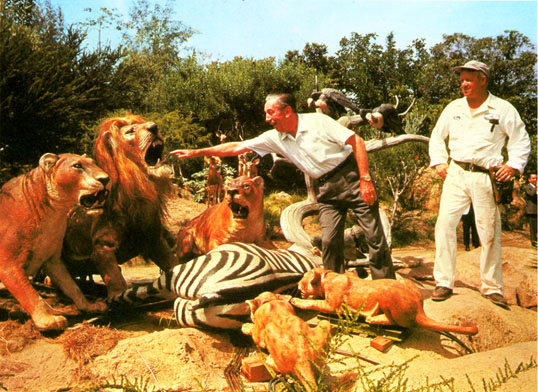 A
few years prior to his death from lung cancer on December 15, 1966, Walt
Disney took a deep interest in the establishment of California Institute
of the Arts, a college-level professional school of all the creative and
performing arts. CalArts, Walt once said, "It's the principal thing I hope
to leave when I move on to greener pastures. If I can help provide a place
to develop the talent of the future, I think I will have accomplished something."
A
few years prior to his death from lung cancer on December 15, 1966, Walt
Disney took a deep interest in the establishment of California Institute
of the Arts, a college-level professional school of all the creative and
performing arts. CalArts, Walt once said, "It's the principal thing I hope
to leave when I move on to greener pastures. If I can help provide a place
to develop the talent of the future, I think I will have accomplished something."
The California Institute of the Arts was founded in 1961 with the combination of two schools, the Los Angeles Conservatory of Music and the Chouinard Art Institute. The campus is located in the city of Valencia, 32 miles northeast of downtown Los Angeles. Walt Disney conceived the new school as a place where all the performing and creative arts would be taught under one roof in a "community of the arts" as a completely new approach to professional arts training.
Walt Disney is a legend; a folk hero of the 20th century. His worldwide
popularity was based upon the ideals which his name represents: imagination,
optimism, creation, and self-made success in the American tradition. Walt
Disney did more to touch the hearts, minds, and emotions of millions of
Americans than any other person in the past century. Through his work he
brought joy, happiness, and a universal means of communication to the people
of every nation. He brought us closer to the future, while telling us of
the past, it is certain, that there will never be such as great a man,
as Walt Disney.
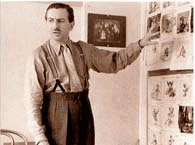
General Quotations
"I am interested in entertaining people, in bringing pleasure, particularly laughter, to others, rather than being concerned with 'expressing' myself with obscure creative impressions."
"We are not trying to entertain the critics. I'll take my chances with the public."
"You can design and create, and build the most wonderful place in the world. But it takes people to make the dream a reality."
 "All
cartoon characters and fables must be exaggeration, caricatures. It is
the very nature of fantasy and fable."
"All
cartoon characters and fables must be exaggeration, caricatures. It is
the very nature of fantasy and fable."
"When you're curious, you find lots of interesting things to do. And one thing it takes to accomplish something is courage."
"I don't like formal gardens. I like wild nature. It's just the wilderness instinct in me, I guess."
"Somehow I can't believe there are any heights that can't be scaled by a man who knows the secret of making dreams come true. This special secret, it seems to me, can be summarized in four C's. They are Curiosity, Confidence, Courage, and Constancy and the greatest of these is Confidence. When you believe a thing, believe it all the way, implicitly and unquestionably."
"We allow no geniuses around our Studio."
"Movies can and do have tremendous influence in shaping young lives in the realm of entertainment towards the ideals and objectives of normal adulthood."
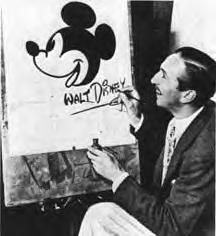 "I
never called my work an 'art' It's part of show business, the business
of building entertainment."
"I
never called my work an 'art' It's part of show business, the business
of building entertainment."
"I am not influenced by the techniques or fashions of any other motion picture company."
"Whenever I go on a ride, I'm always thinking of what's wrong with the thing and how it can be improved."
"The way to get started is to quit talking and begin doing."
"Laughter is America's most important export."
"People still think of me as a cartoonist, but the only thing I lift a pen or pencil for these days is to sign a contract, a check, or an autograph."
"Why do we have to grow up? I know more adults who have the children's approach to life. They're people who don't give a hang what the Joneses do. You see them at Disneyland every time you go there. They are not afraid to be delighted with simple pleasures, and they have a degree of contentment with what life has brought - sometimes it isn't much, either."
"The era we are living in today is a dream of coming true."
"There is more treasure n books than in all the pirates' loot on Treasure Island and at the bottom of the Spanish Main ... and best of all, you can enjoy these riches every day of your life."
"You're dead if you aim only for kids. Adults are only kids grown up, anyway."
"Or heritage and ideals, our code and standards - the things we live by and teach our children - are preserved or diminished by how freely we exchange ideas and feelings."
"I have been up against tough competition all my life. I wouldn't know how to get along without it."
 "Crowded
classrooms and half-day sessions are a tragic waste of our greatest national
resource - the minds of our children."
"Crowded
classrooms and half-day sessions are a tragic waste of our greatest national
resource - the minds of our children."
"You reach a point where you don't work for money."
"Of all of our inventions for mass communication, pictures still speak the most universally understood language."
"I have no use for people who throw there weight around as celebrities, or for those who fawn over you just because you are famous."
"Adults are interested if you don't play down to the little 2 or 3 year olds or talk down. I don't believe in talking down to children. I don't believe in talking down to any certain segment. I like to kind of just talk in a general way to the audience. Children are always reaching."
"A man should never neglect his family for business."
"When we consider a project, we really study it--not just the surface idea, but everything about it. And when we go into that new project, we believe in it all the way. We have confidence in our ability to do it right. And we work hard to do the best possible job."
"I believe in being an modivator."
On Mickey Mouse
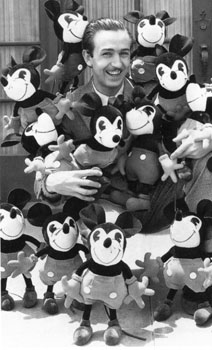 "I
only hope that we don't lose sight of one thing - that it was all started
by a mouse."
"I
only hope that we don't lose sight of one thing - that it was all started
by a mouse."
"Mickey Mouse is, to me, a symbol of independence. He was a means to an end."
"When people laugh at Mickey Mouse, it's because he's so human; and
that is the secret of his popularity."
"He popped out of my mind onto a drawing pad 20 years ago on a train
ride from Manhattan to Hollywood at a time when business fortunes of my
brother Roy and myself were at lowest ebb and disaster seemed right around
the corner."
"Born of necessity, the little fellow literally freed us of immediate worry. He provided the means for expanding our organization to its present dimensions and for extending the medium cartoon animation towards new entertainment levels. He spelled production liberation for us."
"We felt that the public, and especially the children, like animals that are cute and little. I think we are rather indebted to Charlie Chaplin for the idea. We wanted something appealing, and we thought of a tiny bit of a mouse that would have something of the wistfulness of Chaplin- a little fellow trying to do the best he could."
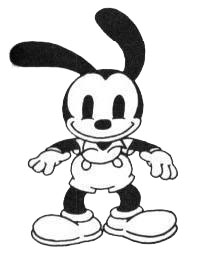 "The
life and ventures of Mickey Mouse have been closely bound up with my own
personal and professional life. It is understandable that I should have
sentimental attachment for the little personage who played so big a part
in the course of Disney Productions and has been so happily accepted as
an amusing friend wherever films are shown around the world. He still speaks
for me and I still speak for him."
"The
life and ventures of Mickey Mouse have been closely bound up with my own
personal and professional life. It is understandable that I should have
sentimental attachment for the little personage who played so big a part
in the course of Disney Productions and has been so happily accepted as
an amusing friend wherever films are shown around the world. He still speaks
for me and I still speak for him."
"Hazel, I hope I am remembered for more important things than inventing
a mouse." Walt Disney to the Disney Studio nurse attending him, on his
deathbed in 1966 at St. Joseph's Hospital in Burbank.
On Disneyland
"To all that come to this happy place: welcome. Disneyland is your land. Here age relives fond memories of the past, and here youth may savor the challenge and promise of the future. Disneyland is dedicated to the ideals, the dreams, and the hard facts that have created America... with hope that it will be a source of joy and inspiration to all the world."
"Biggest problem? Well, I'd say it's been my biggest problem all my life. MONEY. It takes a lot of money to make these dreams come true. From the very start it was a problem. Getting the money to open Disneyland. About seventeen million it took. And we had everything mortgaged including my personal insurance."
"It's no secret that we were sticking just about every nickel we had on the chance that people would really be interested in something totally new and unique in the field of entertainment."
"I don't want the public to see the world they live in while they're in the Park (Disneyland). I want to feel they're in another world."
"When we opened Disneyland, a lot of people got the impressions that it was a get-rich-quick thing, but they didn't realize that behind Disneyland was this great organization that I built here at the Studio, and they all got into it and we were doing it because we loved to do it."
"We did it (Disneyland), in the knowledge that most of the people I talked to thought it would be a financial disaster - closed and forgotten within the first year."
"I first saw the site for Disneyland back in 1953, In those days it was all flat land - no rivers, no mountains, no castles or rocket ships - just orange groves, and a few acres of walnut trees."
"It's something that will never be finished. Something that I can keep developing...and adding to."
"Disneyland will never be completed. It will continue to grow as long as there is imagination left in the world."
"We believed in our idea - a family park where parents and children could have fun- together."
"Disneyland is a work of love. We didn't go into Disneyland just with the idea of making money."
"Disneyland is the star, everything else is in the supporting role."
"Disneyland is a show."
"It has that thing - the imagination, and the feeling of happy excitement-
I knew when I was a kid."
On Walt Disney World
"Here in Florida, we have something special we never enjoyed at Disneyland...the blessing of size. There's enough land here to hold all the ideas and plans we can possibly imagine."
"We've got to study the land.. . . . .We've got to put Disneyland, which
everybody will know, at the very upper end of the property because that
will be the weenie."
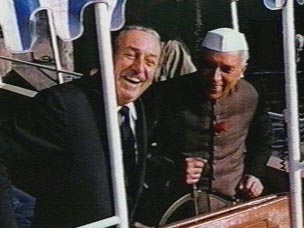
"I've always said that there will never be another Disneyland, and
I think it's going to work out that way. But it will be the equivalent
of Disneyland. We know the basic things that have family appeal. There
are many ways that you can use those certain basic things and give them
a new decor, a new treatment. This concept here will have to be something
that is unique, so there is a distinction between Disneyland in California
and whatever Disney does in Florida."
"I'm doing this because I want to do it better"
"Believe me, it's the most exciting and challenging assignment we have
ever tackled at Walt Disney Productions."
On EPCOT (Experimental Prototype Community of Tomorrow)
"But the most exciting and by far the most important part of our Florida Project...in fact, the heart of everything we'll be doing in Disney World...will be our Experimental Prototype Community Of Tomorrow! We call it EPCOT."
"It's like the city of tomorrow ought to be. A city that caters to the people as a service function. It will be a planned, controlled community, a showcase for American industry and research, schools, cultural and educational opportunities.
 "EPCOT will
be an experimental prototype community of tomorrow that will take its cue
from the new ideas and new technologies that are now emerging from the
creative centers of American industry. It will be a community of tomorrow
that will never be completed, but will always be introducing and testing
and demonstrating new materials and systems. And EPCOT will always be a
showcase to the world for the ingenuity and imagination of American free
enterprise."
"EPCOT will
be an experimental prototype community of tomorrow that will take its cue
from the new ideas and new technologies that are now emerging from the
creative centers of American industry. It will be a community of tomorrow
that will never be completed, but will always be introducing and testing
and demonstrating new materials and systems. And EPCOT will always be a
showcase to the world for the ingenuity and imagination of American free
enterprise."
"I don't believe there's a challenge anywhere in the world that's more
important to people everywhere than finding solutions to the problems of
our cities. But where do we begin... how do we start answering this great
challenge? Well, we're convinced we must start answering the public need.
And the need is for starting from scratch on virgin land and building a
special kind of new community that will always be in a state of becoming.
I twill never cease to be a living blueprint of the future, where people
actually live a life they can't find anywhere else in the world."
On Fantasia
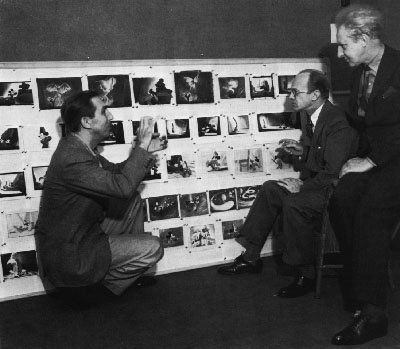 "Fantasia,
to me is a whole new opportunity. For my medium it opens up unlimited possibilities.
Music has always played a very important part since sound came into the
cartoon. Now, the full expression that comes from the new Fantasound opens
up a whole new world for us."
"Fantasia,
to me is a whole new opportunity. For my medium it opens up unlimited possibilities.
Music has always played a very important part since sound came into the
cartoon. Now, the full expression that comes from the new Fantasound opens
up a whole new world for us."
"I was doing Sorcerer's Apprentice with Mickey Mouse and I happened
to have dinner on night with Leopold Stokowski. And Stokowski said, 'Oh,
I'd love to conduct that for you.' ... Well, that led to not only doing
this one little short subject but it got us involved to where I did all
of Fantasia and before I knew it I ended up spending four hundred and some
thousand dollars getting music with Stokowski. But we were in then and
it was the point of no return. We went ahead and made it."
On Animation
"Cartoon animation offers a medium of story telling and visual entertainment which can bring pleasure and information to people of all ages everywhere in the world."
"I started, actually, to make my first animated cartoon in 1920. Of course, they were very crude things then and I used sort of little puppet things."
"We have created characters and animated them in the dimension of depth, revealing through them to our perturbed world that the things we have in common far outnumber and outweigh those that divide us."
"In learning the art of storytelling by animation, I have discovered that language has an anatomy. Every spoken word, whether uttered by a living person or by a cartoon character, has its facial grimace, emphasizing the meaning."
"Animation can explain whatever the mind of man can conceive. This facility makes it the most versatile and explicit means of communication yet devised for quick mass appreciation."
"I take great pride in the artistic development of cartoons. Our characters are made to go through emotions which a few short years ago would have seemed impossible to secure with a cartoon character. Some of the action produced in the finished cartoon of today is more graceful than anything possible for a human to do."
"Animation is different from other parts. Its language is the language of caricature. Our most difficult job was to develop the cartoon's unnatural but seemingly natural anatomy for humans and animals."
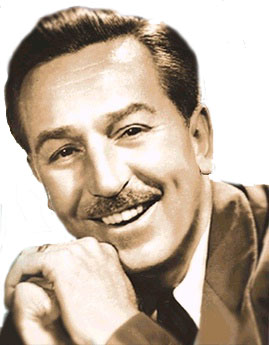 "To
think six years ahead - even two or three - in this business of making
animated cartoon features, it takes calculated risk and much more than
blind faith in the future of theatrical motion pictures. I see motion pictures
as a family-founded institution closely related to the life and labor of
millions of people. Entertainment such as our business provides has become
a necessity, not a luxury. . . it is the part which offers us the greatest
reassurance about the future in the animation field."
"To
think six years ahead - even two or three - in this business of making
animated cartoon features, it takes calculated risk and much more than
blind faith in the future of theatrical motion pictures. I see motion pictures
as a family-founded institution closely related to the life and labor of
millions of people. Entertainment such as our business provides has become
a necessity, not a luxury. . . it is the part which offers us the greatest
reassurance about the future in the animation field."
"I try to build a full personality for each of our cartoon characters - to make them personalities."
"We have created characters and animated them in the dimension of depth,
revealing through them to our perturbed world that the things we have in
common far outnumber and outweigh those that divide us."
On CALarts (California Institute of the Arts)
"I want people to graduate from there really able to do things. I don't want a lot of theorists. I want to have a school that turns out people that know all the facts of filmaking, I want them to be capable of doing anything needed to make a film-photograph it, direct it, design it, animate it, record it, whatever. That's what I want. Heck, I've hired theorists, and they don't have any knowledge I can use. I want to have everyone in that school come out capable of going in and doing a job. These dilettantes who come out with pseudo-knowledge, they give me a pain. I want it so if an actor is needed, they can get an actor right out of school. If a musician is needed, they can go to the music department and find a musicians who can compose music."
"This is the thing I'm going to be remembered for."
Walt Disney was an artist who created his own studio. His problem was that he wanted to exert too much control over every aspect of his empire. Charles Shows worked for many years with Disney as a writer-producer, and published a collection of anecdotes about the master of the Magic Kingdom, these among them.
"Since Walt Disney personally examined every foot of film produced at his studio, he was quite adept at spotting even the smallest mistakes.
One day a few of us studio staffers were arguing about how quick Walt's eye really was. One director, who had seen Walt spot mistakes that no one else could see, even contended that Walt could catch a mistake on a single frame of film as it was run full speed in the projection room.
Since a single frame of film is about one inch wide and runs at the rate of 24 frames per second, that means a single frame is on the screen only 1/24 second. Most of us found it hard to believe that anyone, including Walt Disney, could spot a mistake that was visible for only 1/24 second!
We finally decided that the best way to find out whether Walt could perform this incredible feat was to test him. Thus we had a film editor cut one tiny frame in a strip of film and in its place cut in another frame -a picture of a woman, stark naked.
When the time of the screening arrived, we all sat nervously quiet in the sweatbox watching Walt. He stared at the screen as the film was shown, not saying a word.
All of a sudden Walt yelled, "Hold it!" The film projector stopped. Walt raised his hand. "Back the film up a few feet." Then, "Hold it!" And sure enough, right there on the screen was the single frame of the nakedest woman ever seen.
Walt registered surprise. He asked what the hell a picture of a naked woman was doing in the middle of a Mickey Mouse cartoon. Since nobody could think of a more inventive answer, we just told Walt the truth -that we wanted to see if he could really spot a mistake on a single frame of running film.
Walt looked pleased. He had succeeded in catching the mistake and he
was proud of his keen eye. So instead of firing all of us, Walt laughed
off the incident by remarking, "If that gal had had any clothes on, I wouldn't
have paid any attention to her."
Please visit the source for this page, JustDisney.com, and celebrate what would have been Walt Disney's 100th Anniversary on December 5, 2001!
|
||||||||||||